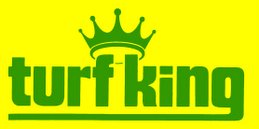MOE water quality monitoring by Aaron Todd
With respect to Cosmetic Pesticide Ban
Urban stream water study.
With respect to Cosmetic Pesticide Ban
Urban stream water study.
Full report at http://www.ene.gov.on.ca/publications/7879e.pdf
Pesticide levels were measured in about 10 small urban streams. The streams were almost all residential, little agricultural, no golf courses. Purpose to measure whether there were reductions due to the pesticide ban. Golf courses and agriculture were mostly unaffected by the ban, so any streams that were in a watershed of golf or agriculture would be less likely to show reductions due to the pesticide ban.
Pesticide levels were measured in about 10 small urban streams. The streams were almost all residential, little agricultural, no golf courses. Purpose to measure whether there were reductions due to the pesticide ban. Golf courses and agriculture were mostly unaffected by the ban, so any streams that were in a watershed of golf or agriculture would be less likely to show reductions due to the pesticide ban.
Samples were taken in 2008 and again in 2009. Samples were also taken in 2010, but the results have not been fully analyzed at this time. (I wonder how the study was implemented in 2008 before there was supposedly any certainty about whether and exactly which pesticides were to be banned)
88 samples were taken in 2008 and 80 samples were taken in 2009.
33 pesticides found in very low percentages. Concentrations were less one ng/liter -one in a trillion, (ng = nanogram)
Dramatic reductions were seen in the 2,4-D + Mecroprop, dicamba herbicide group. Insecticides but not as significantly.
Others not significant. These are soluble.
Some like Glyphosate and its degradates did not decrease. Even they were banned and only allowed to be used to counteract prescribed uses such as poison ivy, the products were readily available at many hardware store. (by the skid)
33 pesticides found in very low percentages. Concentrations were less one ng/liter -one in a trillion, (ng = nanogram)
Dramatic reductions were seen in the 2,4-D + Mecroprop, dicamba herbicide group. Insecticides but not as significantly.
Others not significant. These are soluble.
Some like Glyphosate and its degradates did not decrease. Even they were banned and only allowed to be used to counteract prescribed uses such as poison ivy, the products were readily available at many hardware store. (by the skid)
Pesticide concentrations rarely exceeded guidelines.
.


1 comment:
Leave pesticides to the professionals (lawn care companies) and take them off the store shelves. This would reduce improper pesticide use greatly. The people who know pesticides (University of Guelph) say they are safe if used properly. Let's trust them (we have to believe someone) and not the fanatics who use junk science in thier arguement against good products.
Post a Comment